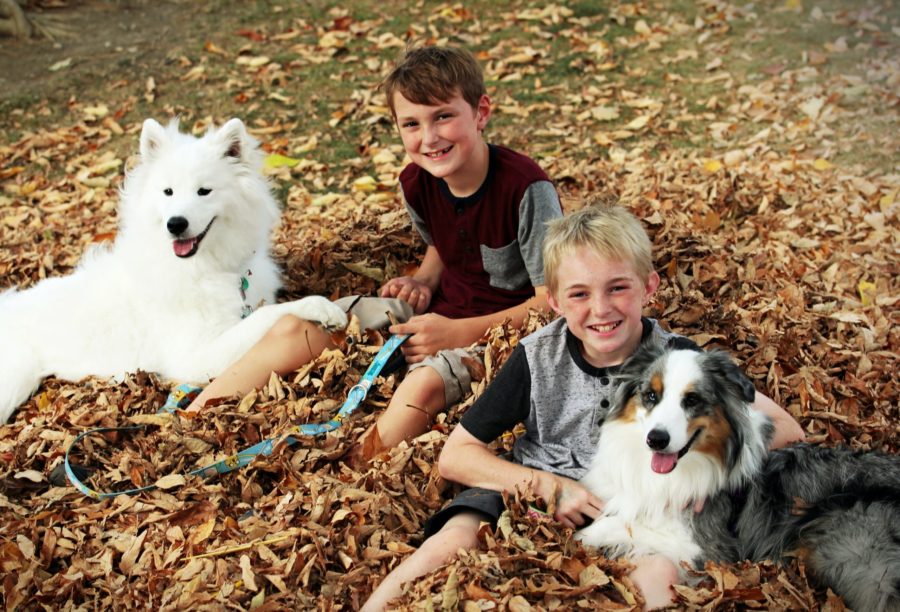Kids and pets go together like peanut butter and jelly. I should know. Our Pugs were my daughter Reagan’s best friends from the time she was born. Her canine “brothers” were there to greet her when we brought her home from the hospital, and it was no surprise that Reagan’s first word was a bark!
Pets are good for kids in so many ways. They encourage physical activity through play and walks and they help kids learn empathy and practice interaction with others.
But that natural and loving relationship doesn’t just happen on its own. It’s important to guide and supervise how they interact with each to ensure no one gets hurt or misbehaves. Here’s how to bring a pet into the family in a safe way for everyone. (Even if you don’t have children of your own, you can use all these techniques when other children such as neighborhood kids, nieces or nephews, or grandchildren are visiting. It’s the best way to ensure that every child you and your pets encounter treats your dog or cat safely and respectfully.)
Pet-Proofing 101
Before you bring home a new dog or cat, make sure your home doesn’t have any safety hazards lying around. That includes kids’ toys. Enlist kids to put away their toys and explain how they could get hurt by chewing up and swallowing objects.
Safe Trip Home
When you pick up your new pet from the shelter or breeder, have a crate or carrier for him to ride in. That’s an easy way to prevent kids from arguing over who gets to hold him on the ride home. Sitting in their laps or being passed around is an unsafe way for him to travel.
Keep Things Calm
Your kids will want to play with their new pet but give him time to get settled first. Let the dog go potty in the yard before you bring him into the house. Have a safe space ready where he’ll sleep, rest, and eat unless an adult is supervising him elsewhere in the house.
Getaway spaces and time apart can help both your child and your pet reset when necessary. Teach your pet that this “home base” — a crate, bed or perch — is where he can go when he’s feeling overwhelmed or in need of a break. Make sure your child understands that when the pet is in his getaway space, he is not to be approached, interacted with, or petted.
Active play is for outside, with an adult keeping an eye on things. Remind kids not to screech or squeal, as those high-pitched sounds can scare a pet or cause him to act aggressively.
Handling Habits
Have kids sit on the floor to pet the puppy or kitten. Establish a rule that only adults can pick the animal up. It can be painful for pets to be carried by kids who don’t know how to pick them up or hold them. Be actively involved in any interactions between children and pets, and teach children how to properly and gently touch and handle animals.
Body Language Basics
Watching how pets react to children is an essential part of making sure everyone remains safe and happy. Pets use their whole body—ears, face, and tail—to express how they’re feeling. Ears laid back, lowered tail, and showing the whites of the eyes are signs that your pup isn’t happy; for cats, flattened ears and a swishing tail are signs of anger or anxiety.
Always intervene instead of letting them work it out on their own. Gently guide kids and animals to keep interactions safe and positive, putting a stop to whatever activities are causing the pet to feel uncomfortable or anxious. Early intervention is the best way to avoid a bite or scratch.
Behavior Skills
Puppies and children need to learn how to behave around each other. For instance, don’t allow puppies to chase and nip at kids’ heels. If a dog steals a child’s toys, teach “leave it” or “drop it” cues and redirect him to his own toys. Remind kids not pet cats on the belly or carry them around like a football.
Be sure you are the one supervising the pet. If your children see the pet doing something he’s not supposed to, like jumping on the kitchen counter or getting into the trash, they should let you know, not try to discipline the pet themselves. Model how to intervene by using force-free, reward-based techniques to bring a puppy or kitten back to appropriate behavior.
When you have a structure in place for greetings, petting, and play, everyone gets along better and makes good choices. Don’t forget to reward children for acting kindly and appropriately toward the new family member. Praise them for making good choices, like leaving pets alone who are sleeping or eating, calmly inviting a pet to approach at their own pace, or touching pets gently. Rewards reinforce good behavior in your pet and your child and can help to ensure that the two of them will form a lasting bond.
This article was reviewed/edited by board-certified veterinary behaviorist Dr. Kenneth Martin and/or veterinary technician specialist in behavior Debbie Martin, LVT.








